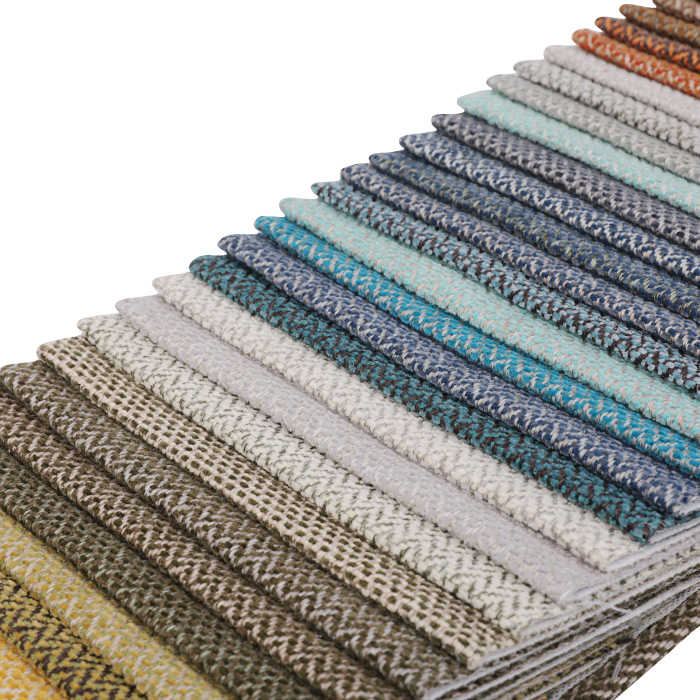Chenille yarn, also known as Chenille, is a new type of fancy yarn. It is made of two strands as the core yarn and spun by twisting the feather yarn in the middle, which looks fluffy. Generally, there are viscose/acrylic, cotton/polyester, viscose/cotton, nitrile/polyester, viscose/polyester and other chenille fabric products. Chenille decoration products can be made into sofa covers, bedspreads, bed blankets, table blankets, carpets, wall decorations, curtains and curtains and other interior decoration accessories.

Chenille Fabrics—Advantages of Chenille
The use of chenille yarn gives home textile fabrics a thick feeling, which has the advantages of high-end luxury, soft hand, plump suede, good drape, and particularly good water absorption. Chenille can not only reduce light and shading to meet the needs of people with different intensities of light; but also can prevent wind, dust, heat insulation, warmth, and sound attenuation, and improve the climate and environment of the room. The ingenious combination of decoration and practicality. At the same time, chenille has the functions of temperature adjustment, anti-allergic, anti-static and anti-bacterial. Because of its good hygroscopicity, it can receive 20 times the water of its own weight, and it feels dry and well received. People love and welcome. Chenille decoration products can be made into sofa covers, bedspreads, bed blankets, table blankets, carpets, wall decorations, curtains and curtains and other interior decoration accessories.
Chenille fabric-shortcomings introduction
Although the use of chenille fabric gives a thick feeling, it has the advantages of high-end luxury, soft hand feeling, plump suede, good drape, and particularly good water absorption. However, chenille curtains have some shortcomings due to the characteristics of the material itself. It will be deformed and will shrink after washing, so it cannot be smoothed by ironing, so as not to cause the fabric to fall down.












